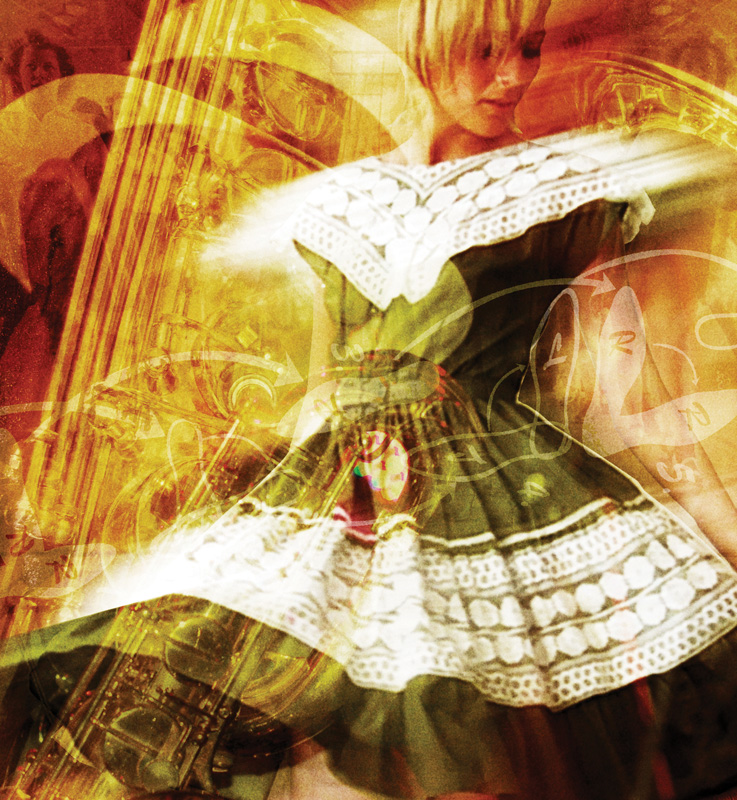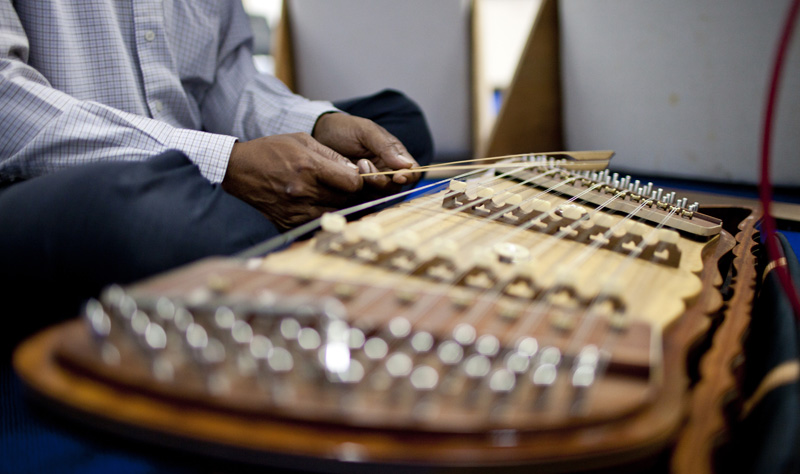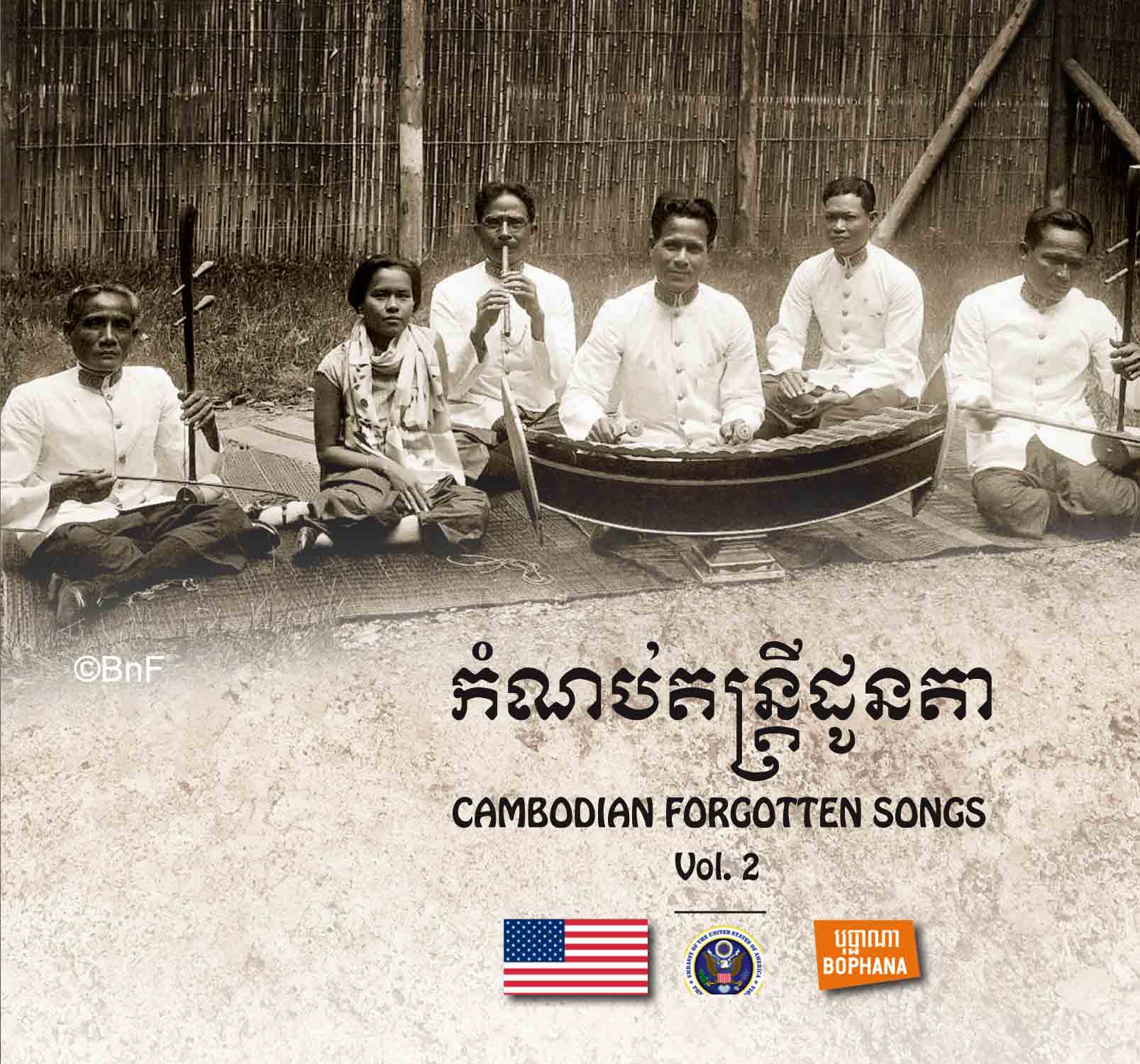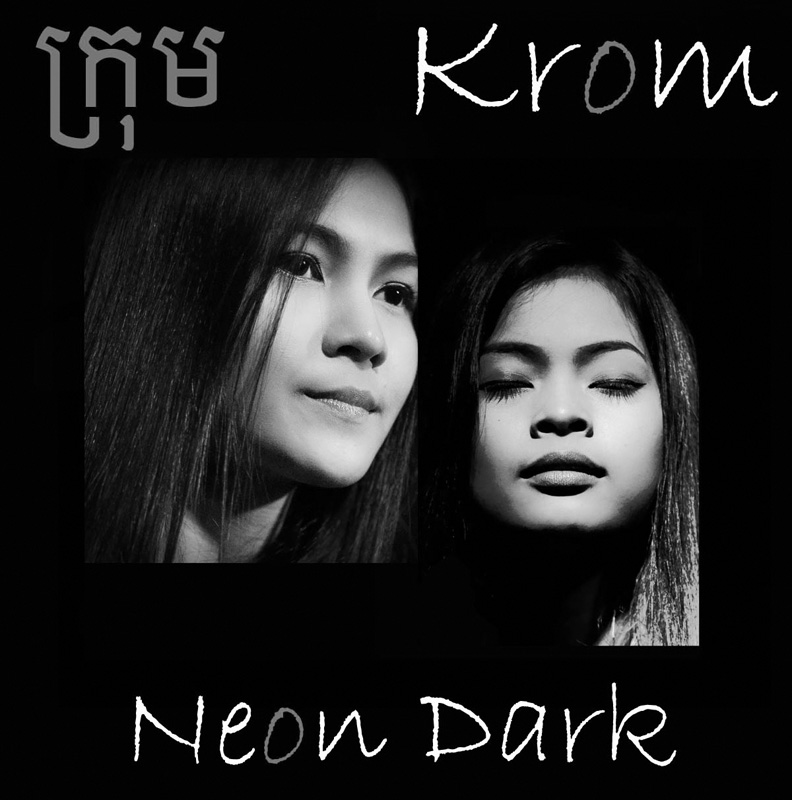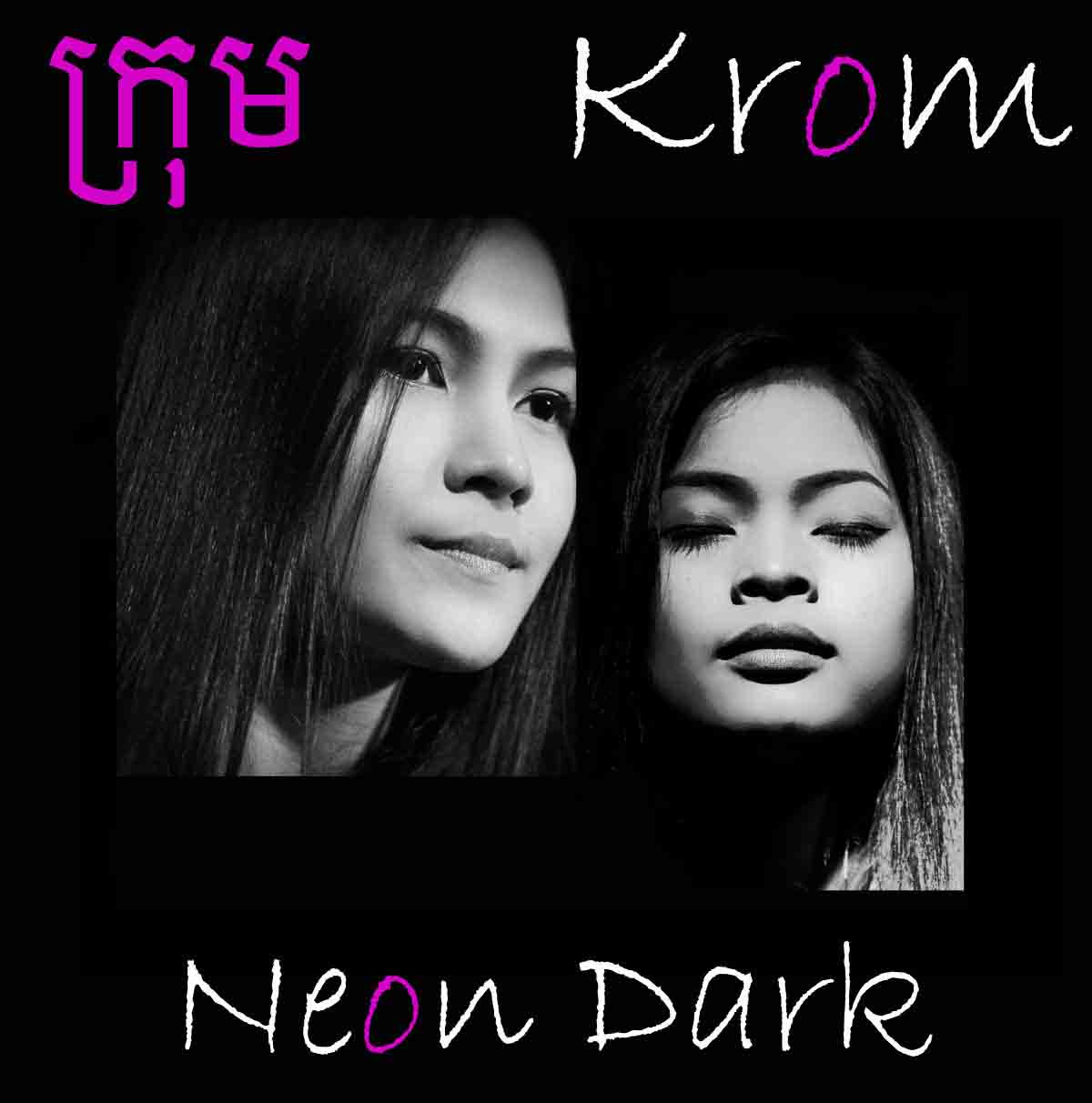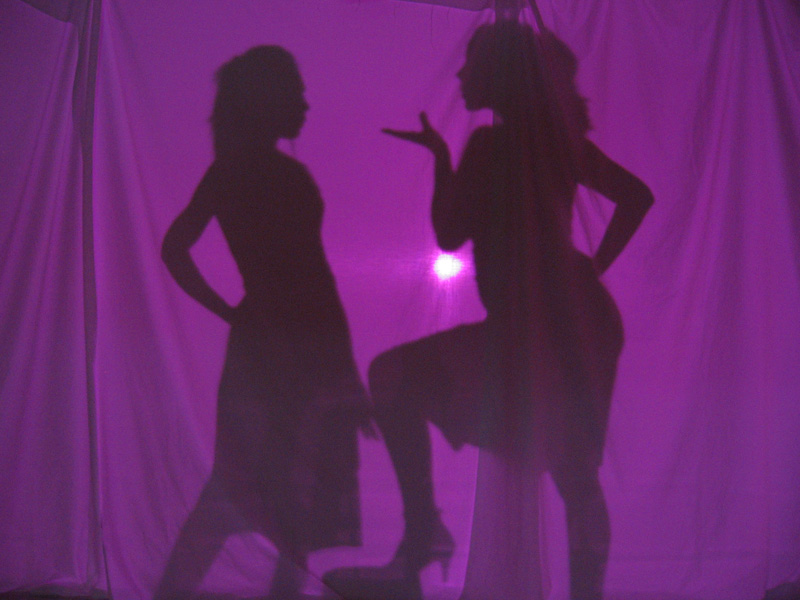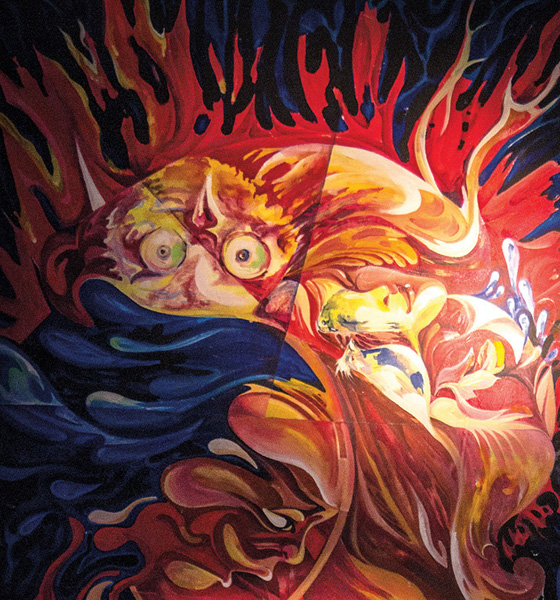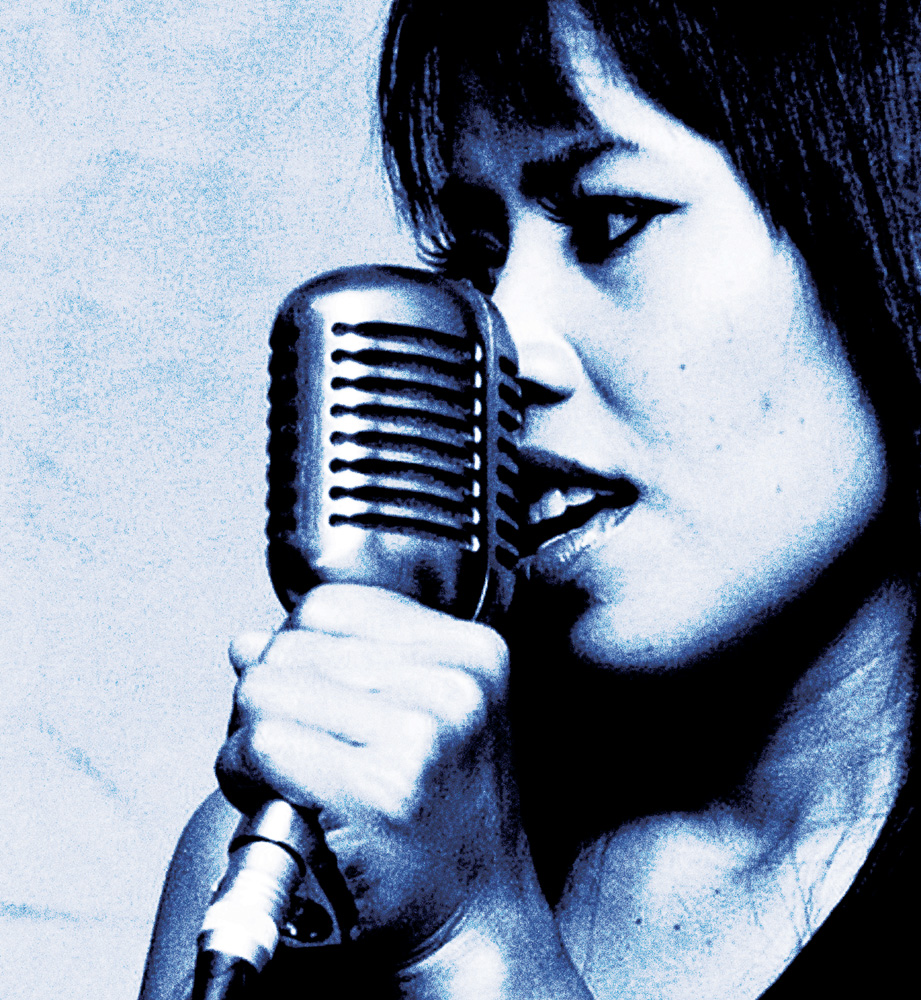When more than a dozen khaki-clad dancers air stepped, jitterbugged and boogie woogied their way through a 30-second commercial for global thread-peddlers Gap in 1998, they unintentionally turned a new generation of rug cutters not onto affordable casual-fit pants but a certain something called ‘swing’.
Jazz – a form considered sacred by the world’s most po-faced musicians (even Russian classical composer Igor Fyodorovich Stravinsky, of habitually high brow, saw fit to approve) – had by the early 1930s birthed its most errant offspring. The traditional two-beat sound of New Orleans had given way to smoother, four-beat syncopated melodies and a dance craze instantly demonised as [GASP!] ‘light entertainment’. By 1935, despite much huffing and puffing on the part of moralistic types, the Swing Era had officially cometh… and would grip the US for a further decade.
Swing, which abandoned the string-heavy orchestration of the ’20s in favour of edgier horn and wind arrangements, was born of the African-American community (as indeed was its forebear), but swiftly transcended racial boundaries. Called on to define this Harlem sound by Bing Crosby on national radio, Louis Armstrong replied thus: “Ah, swing. Well, we used to call it syncopation then they called it ragtime then blues then jazz. Now it’s swing. White folks, y’all sho’ is a mess.”
It was a view Armstrong shared with author Norman Mailer. In his 1957 pamphlet The White Negro, Mailer charts the emerging philosophy of racial role reversal, describing folk “with a middle-class background (who) attempt to put down their whiteness and adopt what they believe is the carefree, spontaneous, cool lifestyle of Negro hipsters: their manner of speaking and language, their use of milder narcotics, their appreciation of jazz and the blues, and their supposed concern with the good orgasm.”
And who could blame hep cats and hipsters for yearning to go the way of such hedonism? Even before Cab Calloway’s 1939 Hepster Dictionary defined them as one ‘who knows all the answers, understands jive’, swingers were speeding up the waltz, cannibalising classic ballet manoeuvres and jabbing a much-needed shot of adrenalin straight into the heart of the Great American Songbook.
Legend has it that sometime in 1927, a year after the Savoy Ballroom in New York first opened its doors, what is today the world’s most famous swing dance was christened quite by accident. A newspaper reporter watching couples swing dance in the Savoy, which occupied an entire block, asked local enthusiast George ‘Shorty’ Snowden what the dance was called. On the bench next to the two men was a newspaper article about American aviator Charles Lindbergh’s record-breaking flight to Paris, bearing the headline: ‘Lindy hops the Atlantic’. George turned to the reporter, said simply ‘Lindy hop’ and then set about creating the world’s first lindy hop dance troupe.
A fusion of jazz, tap, breakaway and Charleston, the lindy hop shot to prominence in the mid-’30s when a swift-footed chap by the name of Frankie Manning joined the ranks of Whitey’s Lindy Hoppers, a dance troupe resident at the Savoy. Deploying hitherto unseen ‘air steps’, in which at least one foot departs solid ground in zany acrobatics, Manning raised the dance bar a considerable margin. Perhaps nowhere is this more brilliantly evidenced than in the 1941 film Hellzapoppin’, where Manning and his fellow dancers catapult each other into the air in a series of torso-tossing moves. These Hip to Hip, Side Flip, Over The Back, Back Flip, Over The Head and The Snatch were, at least at the time, the wildest dance manoeuvres ever conceived.
In actual fact, so wild was the lindy hop that Nazi Germany furiously outlawed it, not that this could of course halt the explosion in German swing bands. Eventually the German authorities relented and created their own Nazi swing band, Charlie And His Orchestra. The band recorded entire albums of swing songs with lyrics ridiculing the Allied nations, which the Nazis promptly then parachuted behind ‘enemy’ lines.
It would take a further 40 years and the advent of break-dancing before anything came close to swing in terms of sheer power, strength and energy. In the meantime, arrangers such as Nelson Riddle and pop vocalists Frank Sinatra, Bobby Darin, Dean Martin and Nat King Cole made sure it was etched onto the global consciousness. By the late 1990s, when Louis Prima’s 1956 song Jump, Jive An’ Wail became forever wedded to the image of Gapsters in khaki-coloured cargo pants, a revival was long overdue.
Today, swing having been immortalised for the 21st century masses first by JXL in Little Less Conversation then by Robbie Williams’ Swing When You’re Winning and later by Marilyn Manson in Mobscene, it’s even on the rise in the steaming urban jungles of Asia. “It’s massive in Korea and China, especially Beijing,” says Richard, a psychologist and long-dancing member of Phnom Penh’s premier swing dance club formerly known as PPPSwings but now poised to relaunch with a weekend-long extravaganza September 27 – 29, followed by weekly classes, as Swing Penh. “Most major cities have swing events. With salsa, it’s a cultural thing, it’s part of an ethos, but with swing it’s just about the dance and you get to choose from a huge set. I got called as a reluctant stand-in and felt a bit awkward, but then it became like a problem to solve: how do you do this? We don’t do too much of the ‘throwing around’ stuff. We’re middle aged, you know…” [Laughs]
The crotchets and quavers (quarter and eighth notes) associated with African-American music trip lightly out of the speaker, translated into nifty toe-heelery by the assembled swingers as a series of ‘triple steps’ and ‘steps’. Part Elvis, part rockabilly, Berlin neo-swing group The Baseballs, backed by an upright bass, punch out a swing-style cover of Rhianna’s Umbrella, replete in upswept quiffs, upturned collars and rolled-up denims.
“This is the one everyone wants to swing dance to,” says Kat, a fellow Swing Penher, as her dance partner Richard spins her away from him and then snaps her body back to his in a move called ‘the quick stop’. “You can swing dance to all sorts of music, including a lot of modern stuff.” Says Richard: “We use Morcheeba, all sorts. I like that you’re not held to one genre. In one night, you can have the whole range of music from the 20th century, which is really good fun.”
Janice Wilson, Swing Penh’s resident instructor, has performed, choreographed and taught dance in 11 countries, touring with Michael Buble and Wynton Marsalis and opening for Bill Cosby at Disney World. “Swing allows for full immersion. You’re not just listening to the music, you’re living it; breathing it,” she says in what might just be the shortest interview in the history of The Advisor.
But before you launch yourself full pelt into the whip, the push, the Carolina shag or the pony swing, you’d be well advised to watch Groovy Movie, from 1944, a gloriously tongue-in-cheek guide to the lindy hop. Also, try to avoid a ‘swungover’: the mental and physical results of binge jitterbugging, as defined by author Bobby White.
And remember, say the word ‘swinger’ in certain circles and you can expect to be met with a snigger: the phrase can also refer to spouse-swapping. “Someone posted this advert on Expat Advisory Services a while back looking for swingers in town,” says Kat. “This nice little old lady wrote back saying how happy she would be to welcome them to Phnom Penh. It was so sweet! I don’t think she had any idea…”
WHO: Hep cats and hipsters
WHAT: Swing Penh Launch Weekend
WHERE: Phnom Penh
WHEN: From 9pm September 27
WHY: “Swing allows for full immersion. You’re not just listening to the music, you’re living it; breathing it” – Janice Wilson
…..
Swing Penh
Launch Weekend
Swing with DJ Invisible Agent
9pm September 27 at the Village, #1 Street 360
Swing Brunch
10:30am September 28 at Comme A La Maison, Street 57
Swing Workshops
2:30pm – 6:30pm September 28 at Doors, Street 84 & 47 (beginners) and The Exchange, Street 84 & 47 (intermediate)
Swing With Kin
9pm September 28 at Doors, Street 84 & 47
Poolside Lindy Grub
10:30am September 29 at The Quay Rooftop Bar, Sisowath Quay
